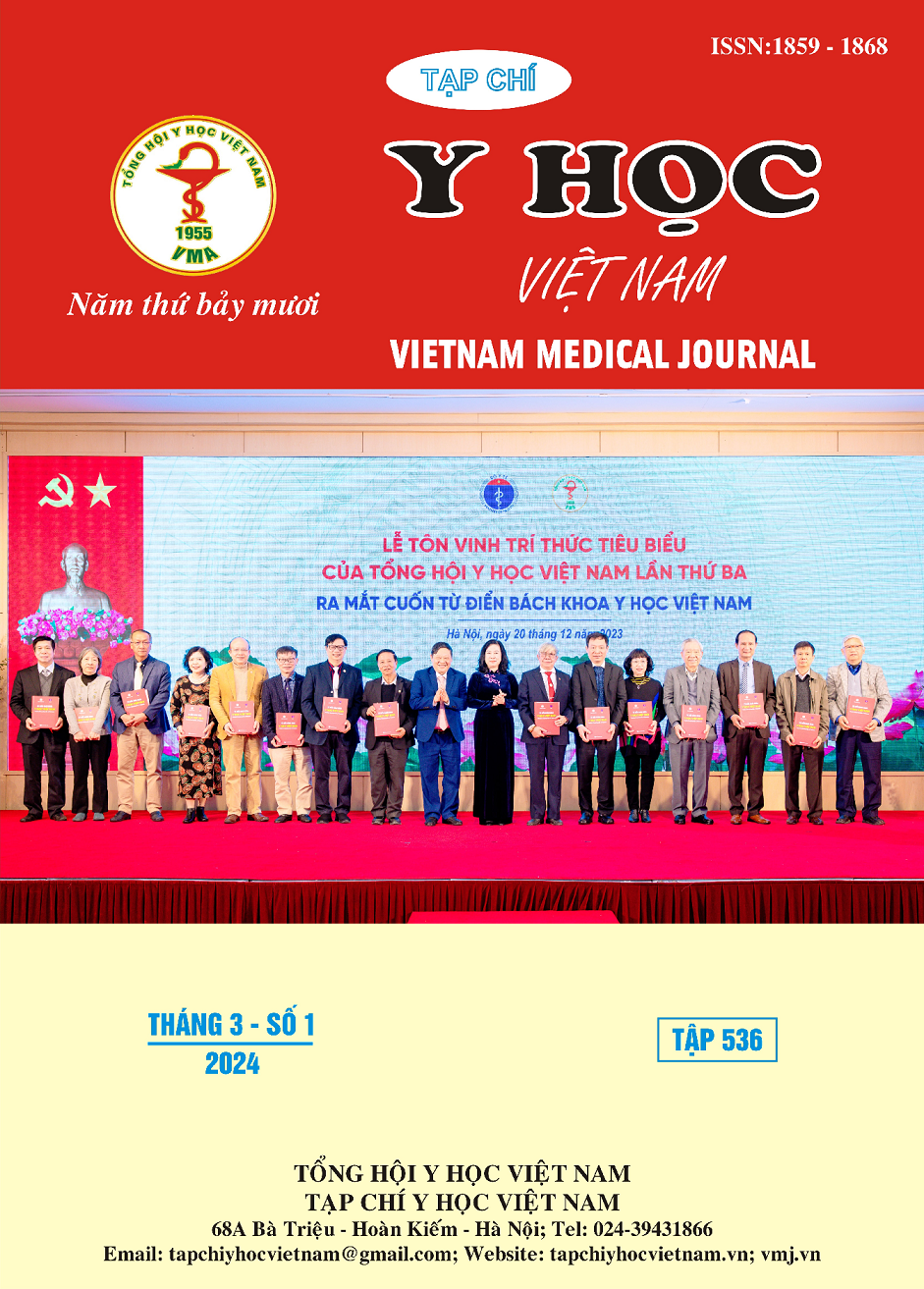STUDY OF THE ANTIBIOTICS RESISTANCE SITUATION IN PATIENTS TREATED AT NIHBT DURING PERIOD 2019-2021
Main Article Content
Abstract
Background: Septicemia is a severe condition commonly seen in patients with blood diseases with immunodeficiency. Purpose: this study aimed to establish the antibiotics resistance in septicemia caused by bacteria and fungi in patients treated at the NIHBT. Patients and methods: 2786 bacteria strands identified from 32.201 positive blood samples of septicemia at NIHBT during period 12/2018-11/2021. Results: (1) Gram negative bacteria have highest antibiotics resistance to ampicillin (>90%), and lower resistance (<5%) to amikacin, fosphomycin; carbapenems (meropenem, imipenem) have 21% resistance; (2) Gram positive bacteria have highest resistance to penicillins (penicillin 81.3%, oxacillin 77.9%), low resistance to vancomycin 1.1%, and linezolid 0.9%; (3) Fluconazole has the highest resistance 40.2%, amphotericin, caspofungin, micafungin have lower resistance (0.4%, 0.9%, 0.4% respectively).
Article Details
References
2. Diekema DJ, Hsueh P-R, Mendes RE, et al. The Microbiology of Bloodstream Infection: 20-Year Trends from the SENTRY Antimicrobial Surveillance Program. Antimicrobial Agents and Chemotherapy. 2019; 63(7). doi: 10.1128/AAC.00355-19
3. Ahmadzadeh A, Varnasseri M, Jalili MH, et al. Infection Pattern of Neutropenic Patients in Post-chemotherapy Phase of Acute Leukemia Treatment. Hematol Rep. 2013;5(4). doi:10.4081/ hr.2013.e15
4. Trecarichi EM, Pagano L, Candoni A, et al. Current epidemiology and antimicrobial resistance data for bacterial bloodstream infections in patients with hematologic malignancies: an Italian multicentre prospective survey. Clinical Microbiology and Infection. 2015;21(4):337-343. doi:10.1016/j.cmi.2014.11.022
5. Carvalho AS, Lagana D, Catford J, Shaw D, Bak N. Bloodstream infections in neutropenic patients with haematological malignancies. Infection, Disease & Health. 2020;25(1):22-29. doi:10.1016/j.idh.2019.08.006
6. Bùi Thị Vân Nga và cs. “Nghiên cứu đặc điểm các tác nhân gây NKH tại Viện Huyết Học – Truyền Máu TW năm 2015”
7. Puig-Asensio M, Ruiz-Camps I, Fernandez-Ruiz M, Aguado JM, Munoz P, Valerio M, Delgado-Iribarren A, Merino P, Bereciartua E, Fortun J, et al. “Epidemiology and outcome of candidaemia in patients with oncological and haematological malignancies”. Results from a population-based surveillance in Spain. Clin Microbiol Infect. 2015;21(5):491 e491-410.
8. Nikolaos V.Sipsas MD; Russell E.Lewis.et al. (2009). “Candidemia in patients with hematologic malignancies in the era of new antifungal agents (2001-2007)”
9. Hoàng Quỳnh Hương (2019). “ Xác định vi khuẩn gây nhiễm khuẩn huyết và mức độ đề kháng kháng sinh của các vi khuẩn phân lập được tại Bệnh viện đa khoa tỉnh Thái Bình năm 2018-2019”, Đại học Y Dược Thái Bình.


